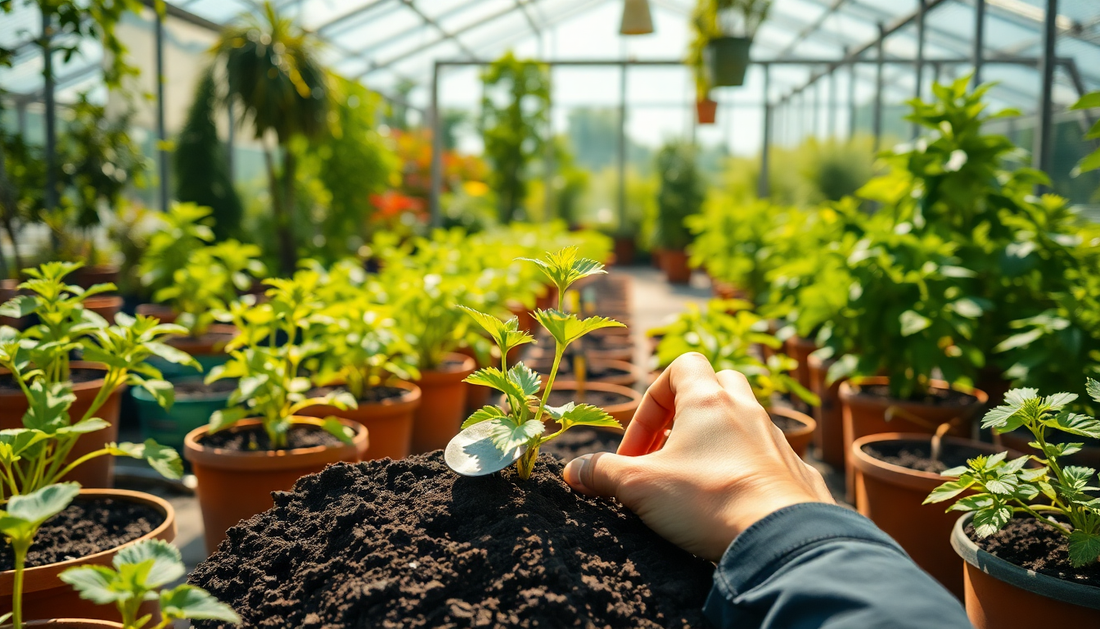
Keeping Your Potting Mix Mold-Free: Tips and Tricks for Healthy Plants
As a passionate gardener, I know the frustration of dealing with mold and fungus in potting mix. These pesky issues can not only ruin the appearance of your plants, but also compromise their health and growth. However, with the right strategies, you can prevent these problems and keep your potting mix fresh and thriving.
In this comprehensive guide, we'll explore the causes of mold and fungus in potting mix, and dive into practical solutions to keep your plants happy and healthy. Whether you're a seasoned green thumb or just starting your gardening journey, these tips will help you maintain a vibrant and mold-free growing environment.
Understanding Mold and Fungus in Potting Mix
Mold and fungus thrive in damp, stagnant environments, and potting mix can provide the perfect breeding ground if not properly cared for. These microorganisms can quickly take over, leading to discolored soil, stunted plant growth, and even root rot.
The primary culprits behind mold and fungus in potting mix are:
- Excess Moisture: Overwatering or poor drainage can create a moist environment that allows mold and fungus to proliferate.
- Organic Matter Buildup: As organic materials like compost or peat moss break down, they can create a nutrient-rich environment for mold and fungus to grow.
- Lack of Airflow: Stagnant air and poor ventilation can contribute to the growth of these unwanted microorganisms.
- Contaminated Soil: Introducing contaminated soil or potting mix can introduce mold and fungus spores into your growing environment.
Understanding these factors is the first step in developing an effective strategy to prevent and manage mold and fungus in your potting mix.
Preventing Mold and Fungus in Potting Mix
1. Proper Soil Preparation
Before filling your containers or raised beds, take the time to properly prepare your potting mix. Start by sourcing high-quality, well-draining soil that is free from any visible signs of mold or fungus. Avoid using soil that has been stored in damp or humid conditions, as this can increase the risk of contamination.
If you're mixing your own potting mix, be sure to incorporate ingredients that promote good drainage and aeration, such as perlite, vermiculite, or coarse sand. This will help prevent the buildup of excess moisture that can lead to mold and fungus growth.
2. Effective Watering Practices
Overwatering is one of the primary contributors to mold and fungus issues in potting mix. To avoid this, be mindful of your watering habits and only water when the soil is partially dry. Use the "finger test" to check the moisture level – stick your finger into the soil up to the second knuckle, and if it feels damp, hold off on watering.
When you do water, be sure to do so thoroughly, allowing the excess water to drain out of the bottom of the container. Avoid letting your plants sit in standing water, as this can create the perfect environment for mold and fungus to thrive.
3. Improve Airflow and Ventilation
Good air circulation is crucial for preventing mold and fungus in potting mix. Make sure your plants are positioned in a well-ventilated area, away from stagnant corners or enclosed spaces. Consider using fans or opening windows to promote air movement around your plants.
If you're growing plants indoors, be extra vigilant about maintaining proper airflow. Consider investing in a small desktop fan or setting up a simple DIY ventilation system to keep the air circulating.
4. Regularly Replenish and Refresh Potting Mix
Over time, the organic matter in your potting mix will break down, creating a nutrient-rich environment that can attract mold and fungus. To combat this, make it a habit to replenish and refresh your potting mix on a regular basis.
When repotting or transplanting your plants, discard any old, compacted potting mix and replace it with fresh, high-quality soil. This will not only help prevent mold and fungus, but also provide your plants with the nutrients they need to thrive.
5. Utilize Organic Amendments
Incorporating organic amendments, such as compost or aged bark, can help improve the overall health and structure of your potting mix. These additions can enhance drainage, aeration, and nutrient content, making it less hospitable for mold and fungus.
When adding organic amendments, be sure to mix them thoroughly into the soil to ensure even distribution. You can also consider using a soil solarization technique to help kill any lingering mold or fungus spores before planting.
6. Monitor and Respond Quickly
Regular monitoring of your potting mix is essential for catching any mold or fungus issues early on. Inspect your plants and soil regularly, looking for signs of discoloration, musty odors, or visible fungal growth.
If you do spot any signs of mold or fungus, act quickly to address the problem. Remove any affected plant material, and consider using a natural, organic fungicide or antifungal solution to treat the soil. Additionally, review your watering and ventilation practices to identify and address any underlying issues.
Maintaining a Healthy, Mold-Free Potting Mix
Preventing mold and fungus in your potting mix requires a multi-faceted approach, but the rewards are well worth the effort. By following these tips and staying vigilant, you can create a thriving, mold-free growing environment for your plants to flourish.
Remember, a healthy potting mix is the foundation for healthy, vibrant plants. By taking the time to properly prepare, water, and maintain your soil, you'll be well on your way to a lush, mold-free garden that will bring you joy for years to come.
Happy gardening!







No comments